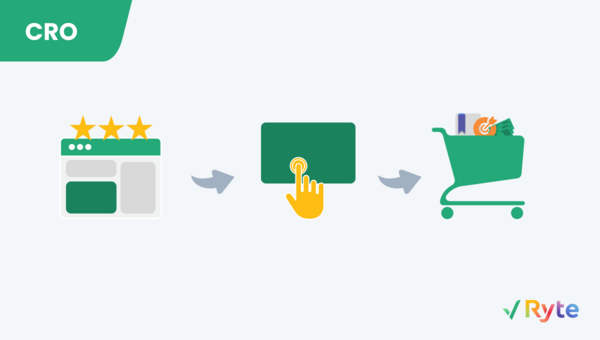Conversion Optimization
Conversion Optimization – also called Conversion Rate Optimization (CRO) – is an important part of online marketing. It includes measures that lead to an increase of conversions and the so-called conversion rate. With Conversion Optimization, marketers can measure success, scale future measures and calculate the ROI more easily. CRO can both affect SEO and SEA and refer to various aspects of a website.
Background
Conversion Optimization is a key discipline of Online Marketing and has developed into its own branch. The often manifold mechanisms that result in a conversion need to be precisely analysed in order to deduce further optimization measures. A well-established method is the so-called “A/B testing”. Two websites will be tested with 2 versions of a landing page in order to find out where there’s a higher conversion. KPI, Bounce Rate or CTR also provide optimization references.
As the term “conversion” itself can include everything from covering an insurance, subscribing to a newsletter to a download, the optimization steps need to be manifoldly adjusted to the respective targets. The super-ordinate goal of the Conversion Rate Optimization is always to maximize profit.
Methods
There are several methods to choose from to optimize the conversion rate. To work efficiently, the decision for a particular method should be taken based on a representative test. Possible CRO starting points are:
Shopping Cart Optimization
The ordering process is every online shop’s most sensitive spot at which a conversion can be broken off. This can be due to customers regarding the ordering process as too complicated or insecure. The shopping cart can be optimized with trust signals such as test seals or customer opinions. In addition, the chance of conversion in the funnel can be increased by increasing the payment options and simplifying the checkout process. Many online shops also work with reminders that appear as pop-ups in the browser window when a user places goods in the shopping cart, but has not continued the purchase.
Usability Optimization
How easily can I find the products that I’d like to buy? How does my shop perform on mobile devices? These are only a few of the questions relating to Conversion Optimization in the field of usability. Possible optimization potentials can be detected via Usability Tests. The usability of a website can be improved in many ways. Optimization of web design or structural adjustments can lead to a better usability.
Content Optimization
Missing conversions can be traced back to missing Call-To-Action elements which prompt customers to take action. Likewise, poorly designed product texts and incorrect texts can lead to a page jump by a user.
Layout Adjustments
Conversions can’t be increased by layout adjustments. Here, neuromarketing knowledge is often applied, for example: the color scheme can influence the user behavior. The selection of colors alone can increase the chance of conversion in a shop, and added images can also have a positive effect on the sales process or the registration process.
Mobile Optimization
Due to an increasing number of users in Mobile Commerce, CRO measures should also include the adaptation to mobile devices. Web pages should be designed in such a way that they can be used perfectly with mobile devices. The mobile device friendliness should also include the complete shopping cart process, so that shopping with a smartphone or tablet is no problem.
Conversion optimization with SEA
In SEA, conversions can be increased by various measures:
- Choosing the placements
- Adapting ad texts e.g. for Google AdWords
- Optimizing landing pages
General Information
Regarding the selling process as a whole is crucial for the CRO. Optimization starts with maintaining a Corporate Identity and ranges from adapting Social Media campaigns to an extension of payment methods. Consequently, every single Online Marketing measure actually needs to be considered as contribution to the CRO.

